-6 F. low Thursday morning in the Twin Cities.
9 F. high at KMSP yesterday.
24 F. average high on January 24. The average high rises to 25 F. by January 28, up from 23 F. in mid-January. Progress.
24 F. high on January 24, 2012.
Coating to 1" possible early today from the latest clipper.
Thaw expected Sunday into Tuesday morning; a few more subzero lows the latter half of next week.
Failure Encouraged
I just had an eye-opening series of talks at
TIES, an education technology collaborative that serves St. Paul school
districts. Did you know parents can now receive text alerts when their
kids skip class? Or log in and see upcoming assignments, and whether
their child had fruit or candy for lunch? Yes, there's an app for that.
I was happy to see innovation &
experimentation on display. "Fail as fast as you can" is the new mantra.
If you're not failing - it means you're not really trying. The one
thing that can't be automated, computerized or outsourced? Creativity.
Something Minnesotans do very well.
I'd love to find a creative way to make it snow.
We need moisture. Up to 1 inch of snow is possible early today; welcome
30s return for a glorious few hours by Monday. The next storm detours
to our east Tuesday; then we get to enjoy a few more subzero nights late
next week.
The jet stream is temporarily locked, howling
from the Yukon, meaning a parade of numbing fronts into early February. A
real winter, without the snow. Odd.
Barb Hollister, Guest Services Coordinator at
TIES told me how much she LOVES winter. "It's a time to work on
projects, slow down, read books, relax, wear big sweatshirts and cozy
sweaters" she sighed.
Less yard work too.
* photo above courtesy of Mike Hall.
"Take a look at this chart (below) of Twin
Cities high/low readings from December of 1983...my second Minnesota
winter. Ten straight days of double-digit below zero nightly readings in
the metro. Six of the overnights were below -22 F. Six of the daily
"highs" were in the negative numbers. And all of this during the holiday
shopping season.
If this were to happen today schools would close, sirens would sound, TV stations would run primetime specials.
We are out of practice." - Brendan Henehan, Executive Producer of TPT's "Almanac" show.
Date High Low
Dec 16, 1983 3 -11
Dec 17, 1983 -4 -17
Dec 18, 1983 -11 -24
Dec 19, 1983 -11 -29
Dec 20, 1983 1 -22
Dec 21, 1983 11 -15
Dec 22, 1983 -12 -20
Dec 23, 1983 -17 -25
Dec 24, 1983 -10 -25
Dec 25, 1983 1 -11
Clipped Again. This morning's clipper may drop a
coating to an inch of snow in the metro (when it's this cold the
snowflakes puff up like feathers in a down comforter - and roads can be
extra icy due to "wheel-track icing"....traffic compacting snow into a
thin layer of ice). So AM Rush Hour may be extra-icy, an easier drive
home later today. Some 2-4" amounts are possible closer to Crosby and
Duluth.
News Of A Thaw. No, it can't come soon enough. I
still think this will wind up being the coldest week of the entire
winter, although a few more subzero nights are likely late next week.
The ECMWF model shows highs near or just above 32 F. Sunday into Tuesday
- the chance of a significant storm next week has evaporated. Big
surprise.
Minnesota Drought: Status Quo. And
frankly there won't be a potential for improvement until the ground
starts to thaw in March, allowing any rain and melted snow to replenish
topsoil. My hope is that we have some snow cover to melt and start to
turn the corner on the drought. U.S. Drought Monitor map courtesy of
NOAA.
Sudden Stratospheric Warming = Cold Intrusions Over Lower 48 States. Meteorologists look for cues. One big cue for subzero air is (paradoxically) sudden warming
in the stratosphere, the upper atmosphere, where temperatures warm
with altitude. This happened a couple weeks ago, as described by
climate scientist Gavin Schmidt: "Stratospheric
sudden warnings happen when there is a large planetary wave - usually
originating in the tropics - that propagates northward and upward and
disrupts the normal polar vortex. Think of it as an ocean wave breaking
on a tide pool. The temperatures in the stratosphere near the pole go
up a lot because of anomalous downward movement. The
connection between the SSW and the surface winds are a well known
phenomena - see papers by Baldwin and dunkerton a decade or do ago.
After an SSW you get (after about 5-10 days) a negative phase AO
associated with very non-zonal jet streams, leading to large temperature
excursions (both +ve and -ve)." Image above courtesy of NOAA.
Arctic Oscillation Forecast.
The AO reached a minimum earlier this week, coinciding with subzero
air draining into the Lower 48 states of the USA. A more positive phase
implies warming (nationwide) next week east of the Rockies. After
February 1 it's anyone's guess - a wide divergence of solutions. I still
suspect a very cold start to February, followed by moderation with 20s
and 30s returning by the second week of February. Graphic above: NOAA.
Good Explanation Of Arctic Oscillation.
Why should you care whether the phase of the Arctic Oscillation
(AO) is negative or positive? Because if you know which way the
atmosphere is leaning, you can make a better long range forecast.
"Unusually mild winter with a persistent Pacific breeze [positive phase
like we had most of last winter] or outbreaks of bitter cold [negative
phase, like we've seen since mid-January of this winter]". This may be
more than you've ever wanted to know, but here's a good description
from The National Snow and Ice Data Center: "The
Arctic Oscillation refers to opposing atmospheric pressure patterns in
northern middle and high latitudes. The oscillation exhibits a
"negative phase" with relatively high pressure over the polar region
and low pressure at midlatitudes (about 45 degrees North), and a
"positive phase" in which the pattern is reversed. In the positive
phase, higher pressure at midlatitudes drives ocean storms farther
north, and changes in the circulation pattern bring wetter weather to
Alaska, Scotland and Scandinavia, as well as drier conditions to the
western United States and the Mediterranean. In the positive phase,
frigid winter air does not extend as far into the middle of North
America as it would during the negative phase of the oscillation. This
keeps much of the United States east of the Rocky Mountains warmer
than normal, but leaves Greenland and Newfoundland colder than usual.
Weather patterns in the negative phase are in general "opposite" to
those of the positive phase, as illustrated below. Over most of the
past century, the Arctic Oscillation alternated between its positive
and negative phases. Starting in the 1970s, however, the oscillation
has tended to stay in the positive phase, causing lower than normal
arctic air pressure and higher than normal temperatures in much of the
United States and northern Eurasia."
Arctic Oscillation graphic above courtesy of J. Wallace, at the University of Washington.
ENSO Outlook for 2013. Here is a prediction of ENSO probability (El Nino, La Nina) from
The International Research Institute for Climate and Society.
Odds favor "ENSO-neutral", which might help our ability to pull out of
a long-term drought over the Plains and Upper Midwest. The worst-case
scenario would be a La Nina cooling phase, which correlates with
drought and much drier than average weather during the summer,
especially central and southern Plains. We'll see.
"Paul... Here's an iPhone
picture of me on Monday walking 4 miles at Bredesen Park in Edina. It
was minus 7 at the time and the wind was blowing about 15 mph, so guess
the wind chill was between minus 25 and 30. It's a self-portrait
because no one else (except the coyotes) was around. My attire
included, from the top, balaclava, neoprene mask, wool Navy watch cap,
thinsulate-lined ski parka with hood, three layers, including heavy wool
sweater, leather mittens with lining and skin-tight finger gloves
inside, long johns, flannel-lined jeans, thermal socks and regular
walking shoes. Bottom line: Felt nice and warm all the way around. Did
it yesterday and today too."
* thanks to my rose-growing, investment-banking friend in Edina, Jack Falker, for sending this along.
"Ask Paul." Weather Related Q&A:
Hi Paul,
"Besides
the lake levels and aquifers, the lack of snow is affecting winter
sports too. My skiis are collecting dust and my
naturalist-led snowshoe outing at Westwood Hills Nature Center are in
danger of being canceled for the second year in a row. You know things
are bad when you text friends in Iowa and beg them to send snow!"
Regards,
John Porter, Minneapolis
John - I'm starting to wonder if this winter will rival last winter's
22.3" of snow. We've picked up 16.6" snow so far - last year on this
date we had seen only 11.4". Will we make up for this snowfall deficit
in late February or March? Perhaps, but we need snow now (at least for
outdoor enthusiasts). Snow on the ground in March is a different animal
than snow in January. Believe me, I'll send up a flare when I see an
actual storm.
Bright Brown Over Southern Minnesota. There's
precious little snow south of the Twin Cities, from Mankato to Rochester
and Red Wing, only a coating to an inch or so in the immediate metro,
maybe 2" far north and west metro. Parts of central Minnesota have about
6-8" of crusty snow on the ground. All in all the map above looks like
something out of mid or late November, not late January. Source:
NOAA.
USA Snow Cover. At least report, snow was on the
ground over 39.6% of the nation, compared with 45.8% of the USA back on
December 24, 2012. Map courtesy of
NOAA.
Top Ten Sky Sights for 2013 for Minnesota
January 21 – Very close pairing of Moon and Jupiter
February 12-20 – Best view of Mercury this year
March 10-24 – Best view of comet PANSTARRS (Astronomers are still not sure if this comet will be great or a dud. How will it pan out?)
May 21-30 – Conjunction of
Mercury, Venus, Jupiter (The wackos may be out again for this one, you
know, planets aligning, end of world, etc)
June 23 – Biggest full Moon (Will be hyped but hard to tell the difference between this and other full moons)
August 12 – Peak of Perseid meteor shower
October 18 – Penumbral lunar eclipse
Mid Nov thru Dec – Comet ISON (Not sure of this one yet either but it looks promising.)
December – Venus as a beautiful evening object
Dec 13-14 Geminid meteor shower (I threw this in to make ten but it will be hindered by nearly full moon this year)
* my thanks to Parke Kunkle, Faculty of Minneapolis CTC and a volunteer at the amazing Bell Museum. You can sign up for the
Astronomer's Update
through the Bell Museum. They run monthly updates that include where
to look for these sights and others. If you love astronomy (one of the
many benefits of living in Minnesota's Big Sky Country) you should
absolutely do this. Aurora image above courtesy of NASA and the
International Space Station.
First Sunrise In 65 Days. Is a lack of sunlight making you a little loopy? Just be glad you didn't settle in Barrow, Alaska. Details from the
Alaska NWS: "
Residents
of Barrow, Alaska watched the sun climb above the horizon for the
first time in 65 days, after it set on November 18, 2012. The sun
skirted along the southern horizon for about 43 minutes today. Tomorrow
it will remain above the horizon for 1 hour and 27 minutes. The
amount of sunlight will rapidly increase in Barrow until May 10th, at
which point the sun will remain above the horizon for 24 hours a day
for nearly 3 months. It was clear in Barrow today and a FAA webcam
captured the short but welcome return of sunshine. Watch the sun trace
across the horizon in the video below."
"Snowpig". Golf Cart Gets Pimped Into An Electric Snow-Blower.
Wow. I need one of these, for the next time it snows. It will snow
again....right? Pretty impressive, and eco-friendly to boot. Details
from
gizmag.com: "
Canadian
eco-enthusiast Dan Baker is at it again, pimping a golf cart into an
electric snow-blowing machine. Last year Baker home built the Firefly
solar-powered boat from scratch and this winter he’s determined not to
be snowed in. Dubbed “Snowpig,” Baker built the snow blower as an
alternative to an ATV/utility vehicle, with the added bonus of it being
emissions free. “As far as I know this is the only vehicle of its
type,” Baker told Gizmag..."
Hot Tub Boat Combines Cruising And Soaking. Hey, I've found the perfect boat! I wonder if they'll have one of these at
The Boat Show, which kicks off next Thursday at the Minneapolis Convention Center.
Gizmag.com has the hot, soggy details: "
Can’t
decide between lounging in the hot tub or going boating? Well, why
not do both? People in and around The Netherlands can already do so,
in a HotTug.
Now, North Americans can also get in on the action, with the Hot Tub
Boat. Manufactured in Seattle, the 6-passenger 15-foot (4.6-meter)
vessel features an 8-foot (2.4-meter) rectangular hot tub, heated up to
104ºF (40ºC) by a built-in diesel boiler. The boat itself is
propelled by a 24-volt electric drive system, maintaining a cruising
speed of 4 knots..."
Why MSP WIll Never Have A Population Of 10 Million.
Maybe I'm wrong. It's happened before. Perhaps in future decades we'll
warm to the point where there is no more January Angst, and millions of
Americans will flock to Minnesota. In the meantime all it takes is a
January like this, every few years, to put the fear of God into mere
mortals, people who can't imagine a "high" of 9 above. Actually, I
thought it felt pretty good out there by late afternoon. Statewide highs
ranged from 4 at Alexandria to 5 St. Cloud to 12 at Redwood Falls.
Paul's Conservation Minnesota Outlook for the Twin Cities and all of Minnesota:
TODAY: Quick inch early - icy roads for AM Rush Hour? Some PM clearing. Winds: NW 15-20. High: 17
FRIDAY NIGHT: Partly cloudy, windy and colder. Low: -2
SATURDAY: Cold start. Sun should be out. High: 14
SUNDAY: Dim sun, getting better out there. Wake-up: 8. High: 28-30 F.
MONDAY: Gray. Badly-needed thaw. Wake-up: 20. High: 33
TUESDAY: Gusty, colder, few flurries. Wake-up: 25. High: 27
WEDNESDAY: Plenty of sun. Brisk! Wake-up: 2. High: near 10
THURSDAY: Patchy clouds, mostly numb. Wake-up: -3. High: 12
* the morning low at Duluth early Thursday was -21 F, about 56
degrees warmer than the water temperature of Lake Superior at Duluth.
Photo of "sea smoke" courtesy of Wanda Brandt.
Climate Stories...
Exclusive: Billionaires Secretly Fund Attacks On Climate Science. This probably doesn't come as a shock, but this article at
The Independent does come as confirmation; here's an excerpt: "
A
secretive funding organisation in the United States that guarantees
anonymity for its billionaire donors has emerged as a major operator in
the climate "counter movement" to undermine the science of global
warming, The Independent has learnt. The Donors
Trust, along with its sister group Donors Capital Fund, based in
Alexandria, Virginia, is funnelling millions of dollars into the effort
to cast doubt on climate change without revealing the identities of
its wealthy backers or that they have links to the fossil fuel industry..."
How Climate Change Could Wipe Out The Western Forests. Here's an excerpt of an eye-opening story at
The Atlantic: "...
Like the hurricane season, statistics suggest the burn season is becoming longer and more severe. A recent study
of fires on U.S. Forest Service land by Climate Central, a nonprofit
research group that reports on the impacts of global warming, found "the
first wildfires of the year are starting earlier and the last fires of
the year are starting later, making typical fire years 75 days longer
now than they were 40 years ago." Compared to the 1970s, the number of
fires covering more than 10,000 acres has increased sevenfold. At the
same time, a study published in the science journal Nature Climate Change in
September predicted that by the 2050s, forests will experience the
worst droughts in 1,000 years. The result will likely be more fires, but
also more beetles, and more trees that just can't stand the heat.
Soon, the landscape of the American West may be unrecognizable. In some
cases, trees will regrow, although probably in sparser patches. Some
may be replaced by different species. But especially in drier, hotter
areas like New Mexico and Arizona, the forests are on course to
disappear altogether..."
Photo credit above: "
The Waldo Canyon Fire blazes through Colorado's Pike National Forest on June 26, 2012." (AP Photo/Gaylon Wampler)
Scientists Dismiss Geo-Engineering As Global Warming Quick Fix.
As I keep telling people - there is no silver bullet, but there's
plenty of silver buck-shot; thousands of ways we can reduce greenhouse
gases and become more energy efficient (and independent). Here's an
excerpt from a blog post at
Smithsonian: "
Installing
a giant mirror in space to block sunlight, dispersing mass quantities
of minerals into the oceans to suck carbon dioxide from the air and
infusing the Earth’s upper atmosphere with sun-reflecting chemicals
might sound like the stuff of science fiction, but they’re actual
techniques that have been contemplated by scientists as possible quick
solutions to climate change. More specifically, they’re examples of
geo-engineering, a hotly contested subset of climate science whereby the Earth’s environment is intentionally manipulated in order to mitigate the effects of global warming. Since cutting greenhouse gas emissions has been something of an exercise in futility,
the idea behind geo-engineering is to put systems in place that manage
the carbon dioxide that’s already emitted into the atmosphere. The two basic methods are solar radiation management—whereby
a small amount of the sun’s heat and light is reflected back into
space—and carbon dioxide removal, which involves the capture of CO2 or
its uptake by the oceans..."
Photo credit above: "
A new study shows that dispersing minerals into oceans to stem global warming would be an inefficient and impractical process." By
Kent Smith
Climate Change Beliefs Of Independent Voters Shift With The Wind.
Looking out the window for evidence of "global" warming? A bit
simplistic. Keeping a global perspective on long-term climate trends is
challenging, even for meteorologists. That's why we have climate
scientists doing most of the important work. Here's an excerpt from
Science Daily: "...
New
research from the University of New Hampshire finds that the climate
change beliefs of independent voters are dramatically swayed by
short-term weather conditions. The research was conducted by Lawrence
Hamilton, professor of sociology and senior fellow at the Carsey
Institute, and Mary Stampone, assistant professor of geography and the
New Hampshire state climatologist. "We find that over 10 surveys,
Republicans and Democrats remain far apart and firm in their beliefs
about climate change. Independents fall in between these extremes, but
their beliefs appear weakly held -- literally blowing in the wind..."
Graphic credit above: "
Predicted probability of “climate
change is happening now, caused mainly by human activities” response as
a function of temperature anomaly and political party." (Credit: Lawrence Hamilton and Mary Stampone/UNH)
Kerry Says Global Climate Change Is Threat To U.S. The Washington Post has a video; here's an excerpt of their story: "
In
his opening statement before the Senate Foreign Relations Committee,
Kerry said that American foreign policy “is defined by life-threatening
issues like climate change,” along with political unrest in Africa and
human trafficking across the globe. Kerry, the panel’s outgoing
chairman, has made the issue of global warming central to his career in
public service. The Massachusetts Democrat has traveled repeatedly to international climate negotiations and pushed in the Senate — unsuccessfully — for a limit on national greenhouse gas emissions..."
Obama's Climate Challenge. Here's an excerpt of a long, but thorough
Rolling Stone article: "...
Now
Obama gets another shot at it. "The politics of global warming are
changing fast," says Kevin Knobloch, the president of the Union of
Concerned Scientists. Thanks to a year of extreme weather and Hurricane
Sandy, a large majority of Americans – nearly 90 percent – favor
action on global warming, even if there are economic costs. The U.S.
economy is on the road to recovery and no longer offers an excuse for
inaction. Big Coal, traditionally the loudest voice against climate
action, has been weakened by a glut of cheap natural gas and the
economic viability of solar and wind power. China has new political
leadership that appears open to discussing a global agreement to cut
carbon. And Obama himself has nothing left to lose..."
Graphic Illustration by Victor Juhasz, Rolling Stone.
New Analysis Shows Simple Math: Keystone XL Pipeline = Tar Sands Expansion = Climate Change. Here's an excerpt from a blog post at
The Natural Resources Defense Council: "
New research confirms what we have heard time and again from the industry itself: the proposed Keystone XL tar sands pipeline will be a direct cause of an increase in tar sands oil development.
More tar sands oil taken out of the ground means more dangerous
pollution that hurts our climate and health. And, this new research also
shows that tar sands will cause even more climate pollution than we
previously thought due to the impacts of the high carbon byproduct
petroleum coke. This is especially important in a time where our
communities are feeling the damage of climate change
in violent storms, wildfires, droughts and floods. Just recently a
federal advisory panel—established by Congress in 1990 to analyze
climate research—released the draft of its third National Climatic Assessment. The report confirmed there is “unambiguous evidence” that the earth is warming...."
Two Hopeful Signs The Obama Administration Will Not Approve The Keystone XL Tar Sands Pipeline. Joe Romm at
Think Progress has the story; here's the intro: "
50-50.
Those were the odds you could get in DC for a bet on whether or not
Obama would ultimately approve the Keystone XL tar sands pipeline.
But this week I think the odds turned against the pipeline, for two reasons:
- Obama devoted far more of his second inaugural address to
climate change than anybody expected — and framed the issue in stark,
moral terms.
- The State Department decision won’t come until after March, which means it will almost certainly be made by the new Secretary, climate hawk John Kerry...."





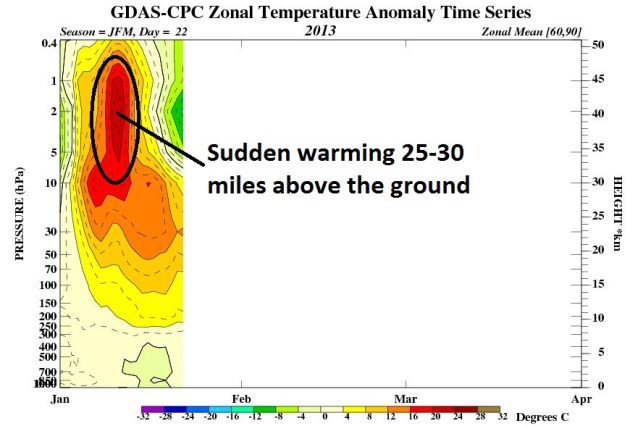
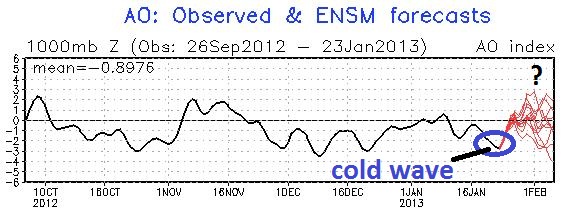
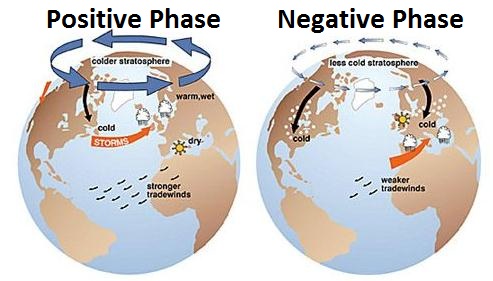

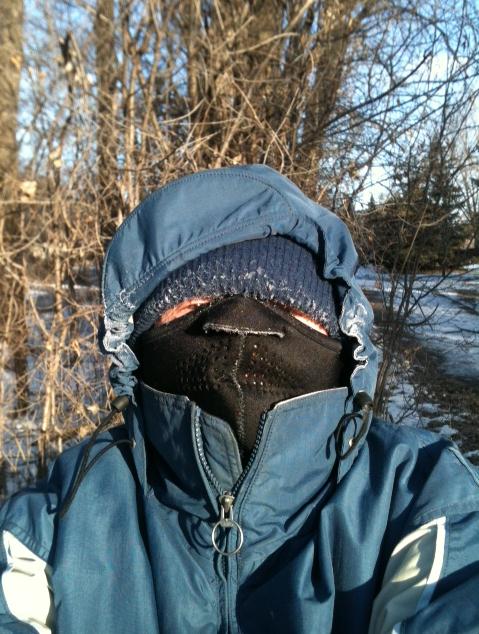
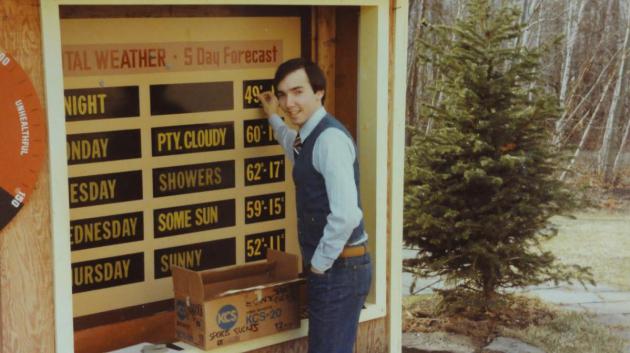
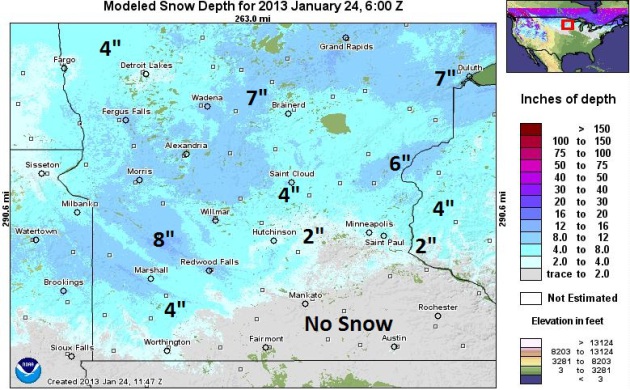

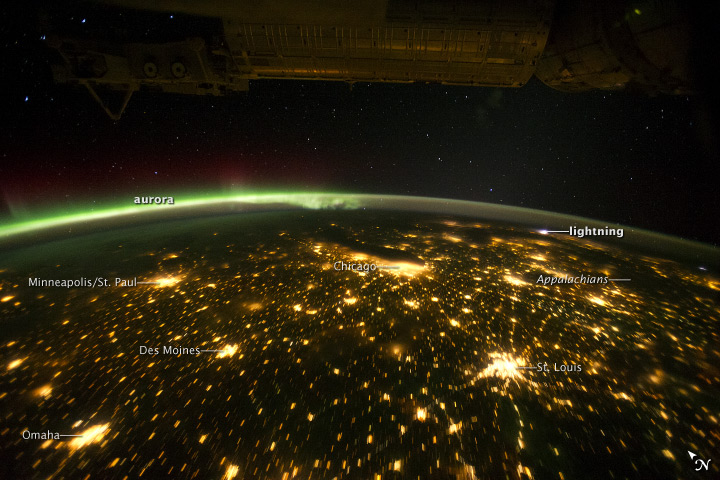
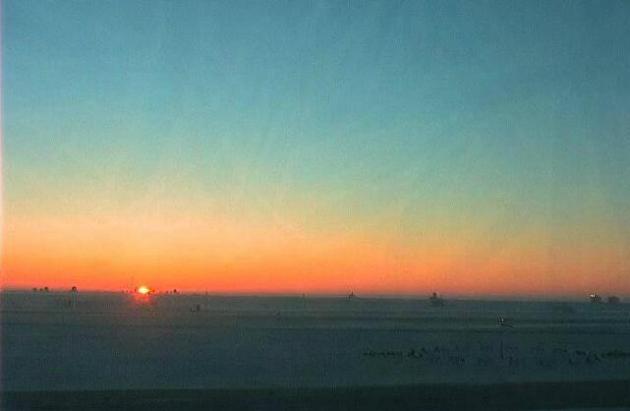
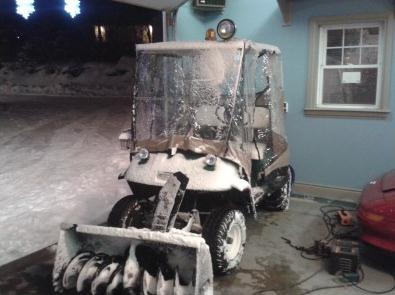
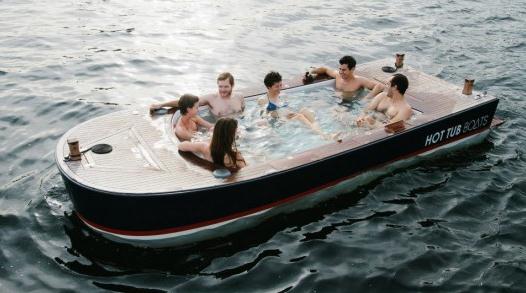




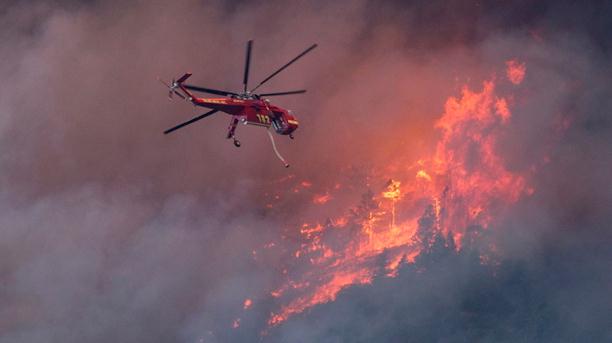
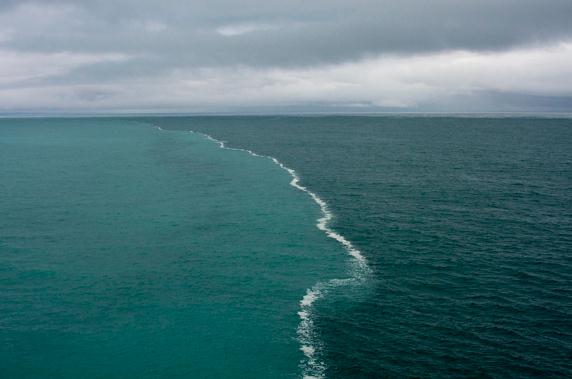
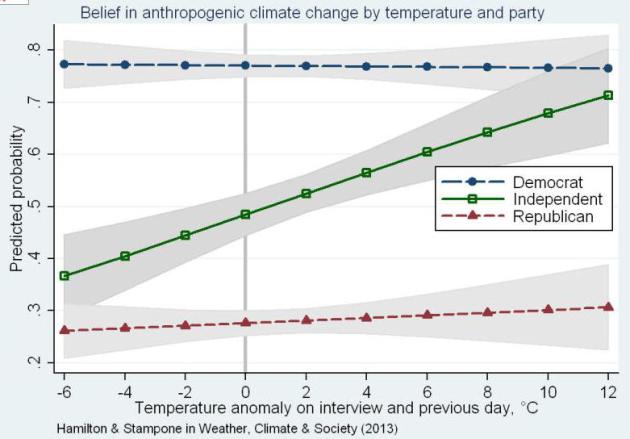
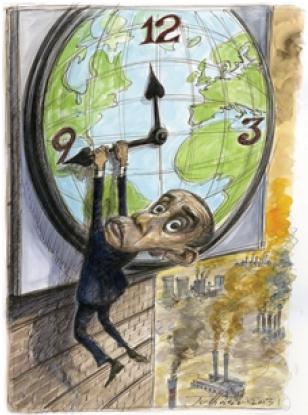
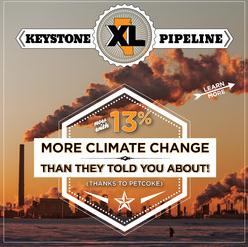
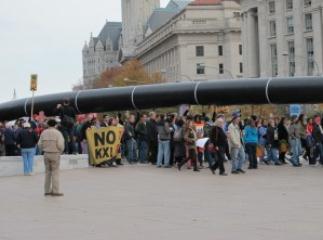

No comments:
Post a Comment